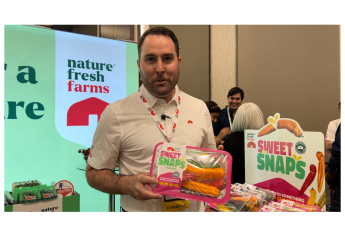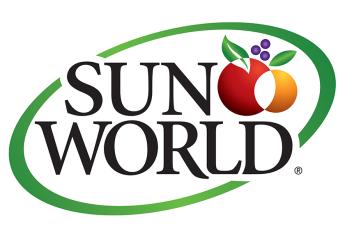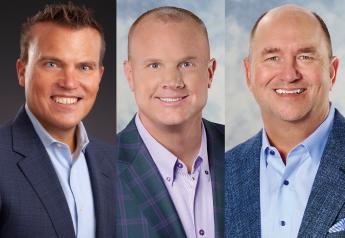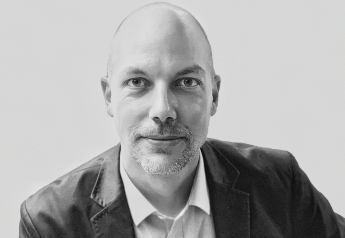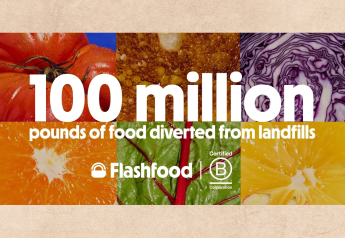Walmart, industry leaders aim to reduce carbon emissions
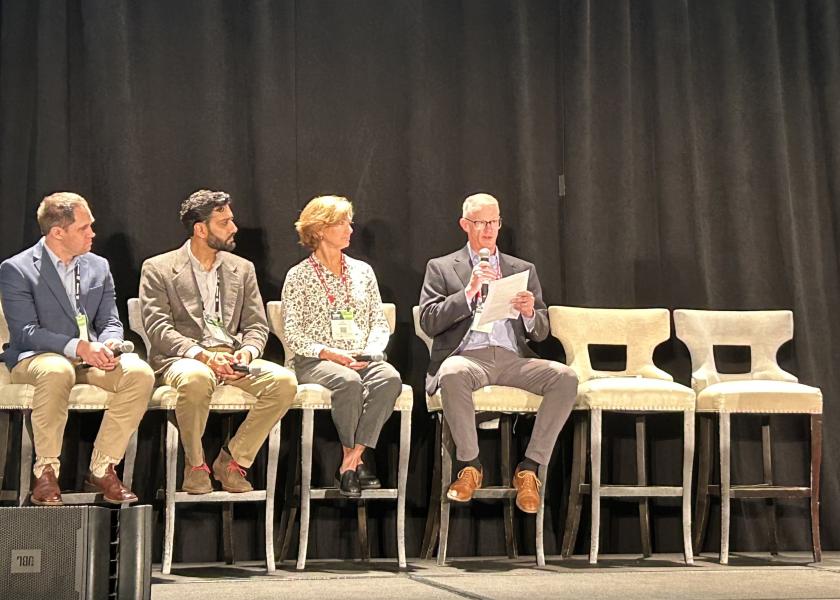
PALM DESERT, Calif. — What is the fresh produce supply chain doing to reduce its carbon emissions? That was among the questions posed to panelists at The Packer’s recent Sustainable Produce Summit, which featured a session on reducing our carbon footprint.
Moderated by The Packer’s Editorial Director Jennifer Strailey, the panel discussion included Scott Dray, senior director of sourcing and produce, Northwest for Walmart; Josh VanDeWalle, North American lead of global food chain partnerships for Bayer; Gina Colfer, key account agronomist — organics for Wilbur-Ellis; and Kabir Tumber, senior manager of membership development and sustainable agriculture at Blue Diamond Growers.
The Packer: Scott, Walmart has a number of ambitious goals around sustainability including Project Gigaton, which aims to reduce or avoid 1 billion metric tons, or a gigaton, of greenhouse gases from the global value chain by 2030. And another goal to reduce emissions to zero by 2040. What's driving these goals, and what progress has Walmart made toward achieving them?
Dray: Through Project Gigaton, we aim to reduce a billion metric tons of greenhouse gases. To put that in context, that's around 200 million passenger vehicles being removed from roads on an annual basis. It's a big deal, but we couldn't do it alone. We need help to get there.
We have roughly 5,200 of our suppliers engaged in Project Gigaton, and so far we've achieved around 75% of the goal of removing the equivalent of 150 million average passenger cars from the roads through our collective efforts. Walmart did this collectively, and together we have made a big difference, but we still have a long way to go.
As to the second part of that question, we’re targeting zero emissions by 2040, so we need to reduce our global operations’ emissions to zero and power our facilities with 100% renewable energy. We're working towards that.
We've decided that it's important to focus on four strategic de-carbonization pillars. The first one is how can we scale renewable energy, and there's a lot of work that goes into that. So far we've achieved enough energy from renewable sources of power to address roughly 50% of our store needs today.
We've also focused on using better refrigerants with lower global warming potential impacts. And the third area is working on replacing fossil fuel with zero-emission fuel. There's still a lot of work to be done there. And we can't do that with the technology we have in place today, so we need innovation to support that.
And finally, transportation. Since 2005, we've doubled the efficiency of our Walmart fleet, meaning we can do more than twice the amount of volume with the same gallon of gasoline or diesel fuel to deliver to the stores. But we still need a lot more work in all of these areas.
The Packer: Kabir, I understand that Blue Diamond Almond Grower Co-op received a grant from the USDA for up to $45 million to implement climate-smart practices in its orchards. What can you tell us about these smart initiatives at the field level, and what are some of the environmental benefits?
Tumber: We’ve been around since 1910 as a cooperative focusing exclusively on growers in California, and most of our farms are family operated, with many on the third or fourth generation. As the marketing arm for these growers, we have an ability to communicate and drive change among our membership base and so that ties into sustainability and climate-smart practices.
About three years ago, we launched an orchard stewardship program and now have over 40% of our acreage participating in this program, which as far as almond acres go, is the largest amount of acres participating in any sustainability program globally. So, it's not a trivial task. That really set the foundation for our application to the USDA climate-smart grant, and we were awarded up to $45 million over the course of five years, largely enhancing activities that we're already doing on the ground with our farmers.
There are four primary activities that we're offering for our growers.
We have annual planted cover crops in between the trees and conservation of some parts of the field that are not farmable — and permanent cover hedgerows which offer other benefits. And then full orchard recycling specific to almond trees, which typically last for about 25 years. At end of the life, once the orchard is pushed over, this activity actually chips up the orchards and reincorporates it into the soil to sustain the carbon sequestered over the life of the orchard back into the soil.
Collectively it is four practices supporting our already existing stewardship program. Biodiversity offers benefits on top of carbon, such as pollinator health, water conservation, soil health as well as air quality.
The Packer: Gina, Wilbur-Ellis is also leading the charge on sustainability. What can you tell us about some of the company's initiatives and what you're doing to reduce your carbon footprint?
Colfer: Wilbur-Ellis has been in business for 100 years now. We just celebrated our 100-year anniversary and we’re still a family-owned company, and the younger generation sees that if we are going to sustain and be able to flourish and live in a world that has fresh food, we need to be sustainable. So, their initiative is to be carbon zero by 2050.
The first low-hanging fruit is to put solar panels on our branches. We have 180 branches west of the Mississippi, and we have six branches that are slated to go completely solar by the end of this year. They're hoping to be able to produce 800 megawatts at the six locations, and then there's another 16 locations slated for solar in 2024.
We are also piloting with Ford to test its electric vehicle trucks. We’re working with Ford to determine the fleet side of things. We've really seen already that infrastructure is so critical in the success of these types of technologies.
And then on the input side — on the grower side — we're really investing in some new technologies that are interesting. We're working with technology that's taking the environmental influence out of inputs and producing clean water and dry organic fertilizer crumble that could then be spread on the field. We’re also producing an ammonium nitrate product that is a biologically based ammonia. It is a very efficient nitrogen form that is biologically derived instead of synthetically derived.
It's a whole cycle — a nutrient management plan and then also looking at other technologies that are sequestering carbon and getting that carbon back into the soil.
The Packer: Josh, Bayer has a number of climate-smart practices in place from seed development to water efficiency to crop protection. What can you share about some of Bayer’s efforts to reduce carbon emissions?
VanDeWalle: Bayer’s vision is “Health for all and hunger for none.” And I really think that we try to live there with our products and the solutions that we provide to farmers that help them to produce higher yields with higher quality, using less inputs and less resources to get there. And we're investing over 2 billion euros every year in research and development to come up with new products.
[One] area that I'm really excited about is seeds. We sell seeds for all the major crops from corn and soy to more than 20 different vegetables, and we use precision breeding in coming up with new varieties.
For example, we have a variety of tomato which is sold in 13 countries around the world, especially to smallholder farmers in countries like India, where the transport between the farm to where the produce is sold is long and they don't always have the refrigeration they need. This tomato has been bred specifically so that it can thrive in that environment. So, there's less food waste. The typical food waste for tomatoes in India that don’t even get to market is about 30%. With this tomato, we can actually reduce it to less than 10% spoilage, which in turn reduces the carbon or greenhouse gas emission input by greater than 25%.
We're also working to help farmers take advantage of carbon markets with our program called ForGround, an industry-leading data capture tool. We're using our expertise and investment in this space to help measure, report and verify all the tracking of carbon markets potentially for projects like Project Gigaton.
The Packer: Scott, Walmart has said it wants to be regenerative. What does that mean for Walmart’s suppliers and its customers?
Dray: For 17 years or so we've been talking about sustainability and made it a priority for our company. We realized to reach our goals of being more sustainable and creating a more equitable future, we needed to go beyond sustainability as we defined it today. In 2020, we raised our ambition to become a regenerative company dedicated to placing nature and humanity at the center of everything that we do.
I think of sustainability as maintaining or conserving and regenerating means to restore, renew and replenish. It's about putting back more than you take. And we've set ambitious goals to advance regeneration across four key pillars within Walmart: climate, nature, waste and people.
We've already talked about climate with Project Gigaton. With nature, we've made some aggressive goals there as well. We’ve stated that we will source fresh produce and floral from suppliers that adopt integrated pest management practices as verified by third party by 2025. We've also encouraged the expansion of pollinator habitats. In the U.S., we encourage all of our suppliers to protect, restore or establish pollinator habitats by 2025 on at least 3% of their land.
The third pillar is waste. Walmart is working toward a goal of zero waste in our operations and key markets by 2025. That's not very far away. In 2021, for example, we diverted 70% of our global operations’ operational waste from landfills and incineration. We're on a mission to make our global private-branded packaging recyclable, reusable or industrially compostable by 2025, with many pilots underway to innovate materials, product and packaging formats that eliminate plastic waste. We're also seeking to eliminate food waste and support community food recovery and hunger relief programs.
And finally, not least of all, is people. Prioritizing people is an extremely important part of our business. Over the past several years we've worked with several groups to develop the Ethical Charter on Responsible Labor Practices. We will be committed to sourcing 100% of our fresh produce and floral products from suppliers who have endorsed the ethical charter. We plan to roll out the first round of that program this year.
The Packer: Gina, in your work representing the leafy greens and vegetable growers of California’s Central Coast, you've said that you’ve found food safety is a key driver to the scorched-earth policy and that biodiversity and carbon-sequestering efforts can be at odds with food safety concerns. How do we bridge that gap?
Colfer: I worked with a grower during the 2006 E. coli spinach outbreak. Before that, we were focused on farming, and food safety wasn't at the top of the list. After 2006, it became a whole new industry and the California Leafy Greens Marketing Agreement was created. Shippers, buyers and retailers all became super focused on food safety. So, a lot of good things came out of that tragedy, but then there are also some negatives.
In a race to have the cleanest produce possible, what occurred is what we call in our industry “the scorched-earth policy.” Where trees were removed because they were habitats for birds, and birds were then seen as a threat to food safety. And grassland waterways were taken out.
So, I think we could have a clearer idea of what we want as consumers. Do we want our farmers to have biodiversity and to have grassland ditches that will sequester carbon and not have those ditches have herbicides applied to them?
We know that E. coli and Salmonella are associated with the proximity of cattle to fresh vegetables, but we're not sure about the birds. There are lots of studies out there that show birds are a positive around farms because they consume Diamondback moths and other insects. So, songbirds are as beneficial as our raptors and owls. I think it's just a reevaluation of how clean our farms need to be.
Grassland ditches add diversity to the farms’ floral habitat — a habitat for our pollinators and a lot of our growers have none of that because of the food safety restrictions that are put on them.
The Packer: Kabir, In addition to some of the food safety issues that Gina spoke about, what do you see as some of the challenges that growers face in terms of implementing cover crops and creating these more biodiverse habitats? Are there incentives for growers to embrace these more sustainable practices?
Tumber: Yes, there are quite a few challenges that we've been working through with our growers in the last several years. With a lot of these climate-smart practices, there’s a material investment. It can be a huge challenge and big investment. So, at Diamond we've worked very closely with industry partners — whether it be cooperative extensions, other private organizations or customers — to help fund activities that will drive education.
As an example, we worked with a group called Project Apis that focuses on pollinator habitat. They basically incentivize our growers by offering free or subsidized seed for the first two years of cover crop and providing all the technical assistance. Last year we had 29% of our acres planted [with habitats], so it works. Again, it's that technical knowledge and access to resources.
One of the goals of this USDA grant is to create a market mechanism, so that there is a premium or some kind of value associated with these smart practices that we can pass back to our growers.
The Packer: Water is another hot topic as it relates to carbon emissions. Josh, what is Bayer doing around water efficiency?
VanDeWalle: I'll highlight two things. One, we recently made some water commitments and more specifically, outside of the U.S., where we're working to develop new seeds for rice in countries like India, which will reduce the amount of water used in production. We’re also looking at our entire water sourcing footprint as well.
Our seeds division, for example, is looking at California and tomato varieties that may offer more water efficiency. We want to make sure that it's not an anomaly [given the rain California had this year] but initial results are promising that perhaps we need to adjust our water recommendation. It is important to start to measure things like water use efficiency, which is really important, especially in California.


